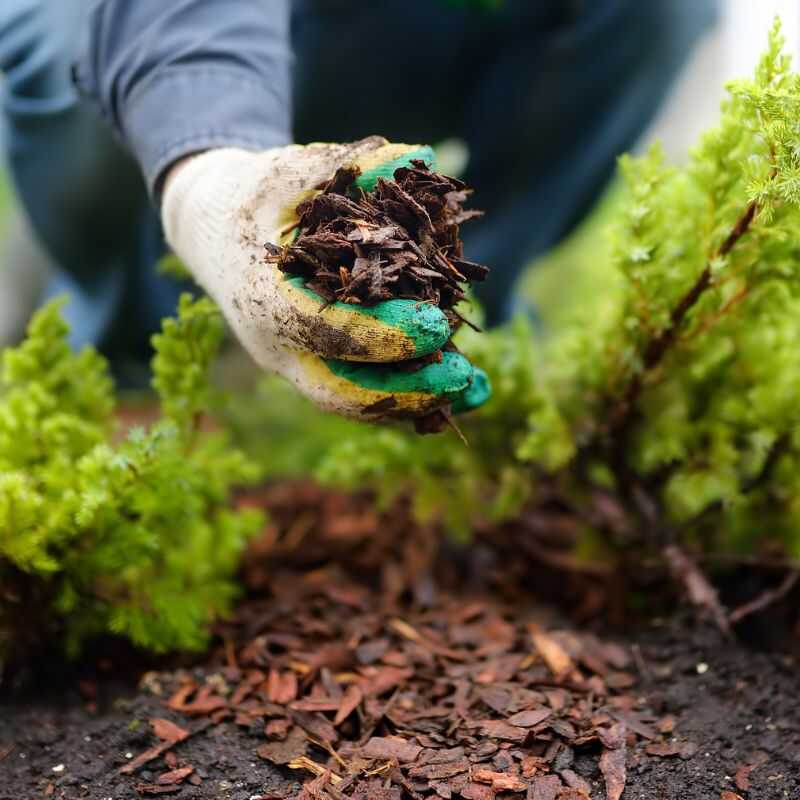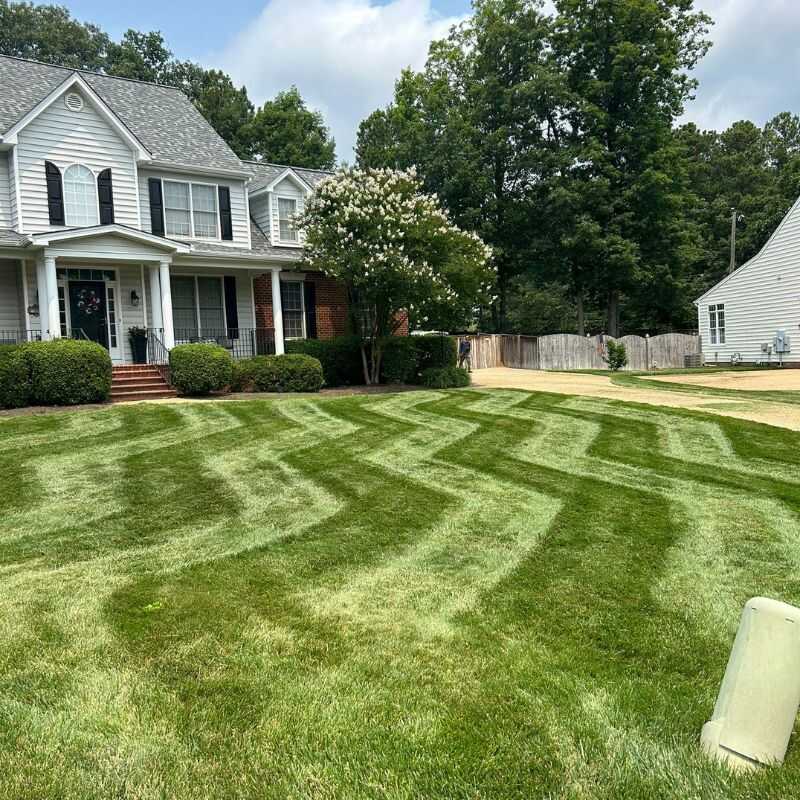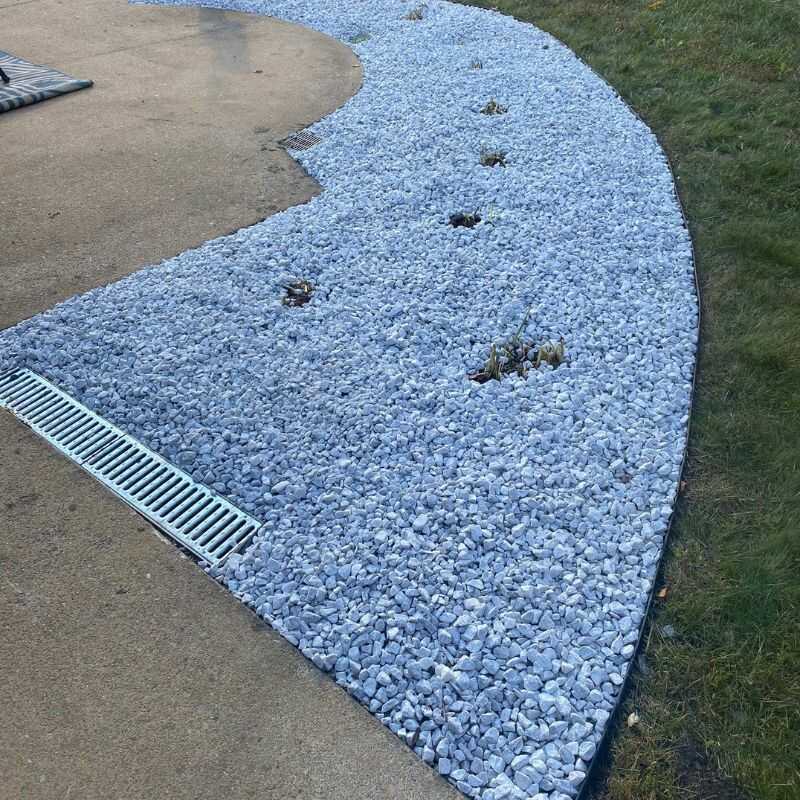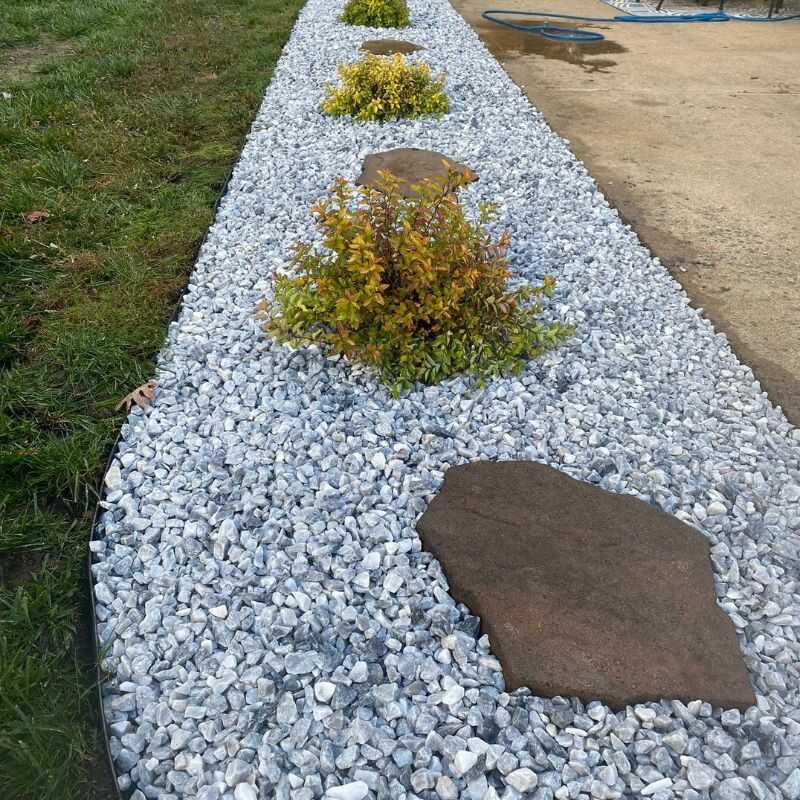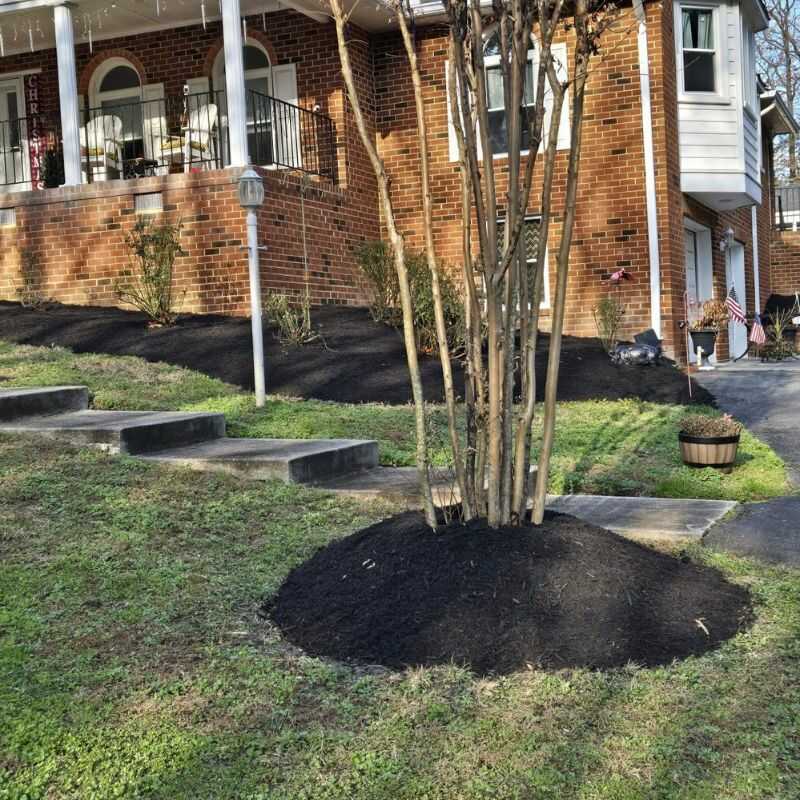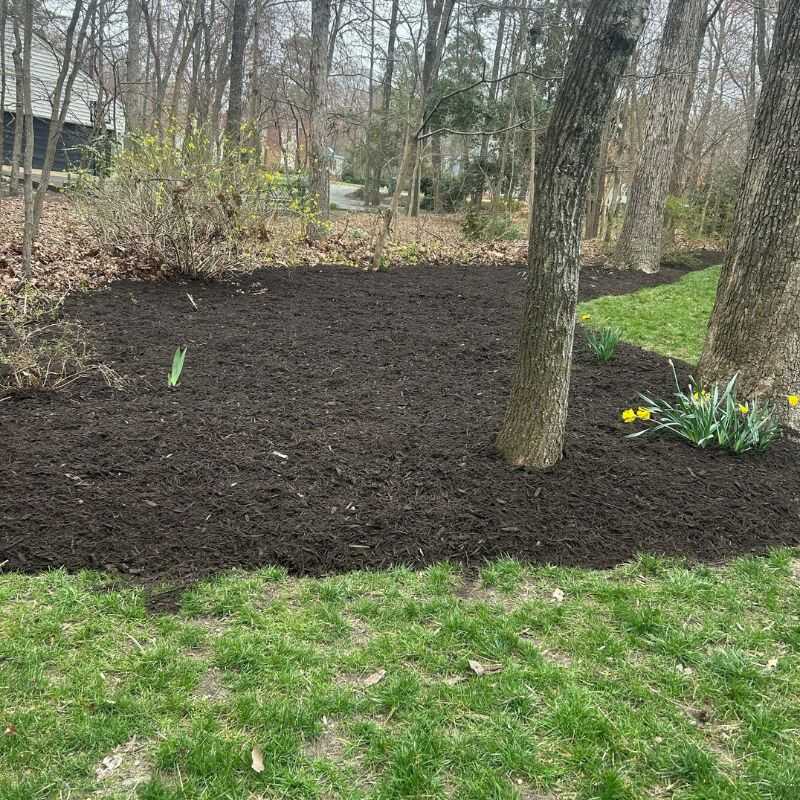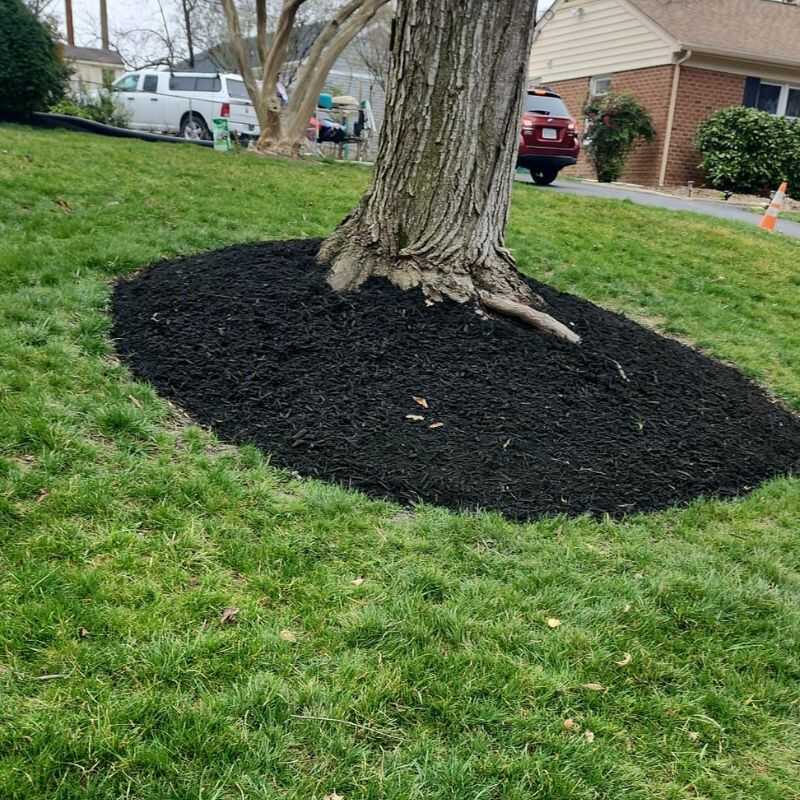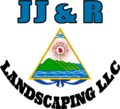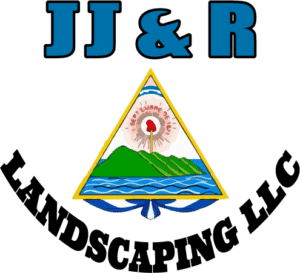Choosing between DIY efforts and professional landscaping is one of the most impactful decisions that lead to landscaping mistakes that increase costs. Attempting to tackle landscaping, hardscaping, mulch, and lawn care alone might seem budget-friendly—but can introduce negligence, inefficiency, and long-term damage that cost far more. This section examines the real costs of going DIY and why a professional, integrated service yields greater value, consistency, and safety.
Top Landscaping Mistakes That Increase Your Costs Fast
Why Landscaping Mistakes That Increase Costs Often Go Unnoticed
When it comes to landscaping mistakes that increase costs, most property owners in Richmond, VA don’t realize the damage until it’s too late. These errors may not be obvious during planning or installation, but over time, they lead to rising maintenance expenses, plant failure, drainage issues, and even complete redesigns. In this section, we break down how small oversights balloon into costly setbacks—and how to avoid them from the start.
Skipping a Professional Design Master Plan
First, many property owners assume they can sketch out the landscape themselves, but this is the most common mistake that raises long-term costs. Without a professional blueprint:
Plant beds may be too close to walkways, leading to destructive root interference.
Overgrown plants could block driveways or obscure sidewalks.
Hardscape elements like retaining walls may clash with existing features.
Eventually, pathways are re-laid, plants re-located, and irrigation rerouted—often at twice the cost. Moreover, an unplanned setup misses opportunities for efficient pest control, irrigation optimization, and aesthetic harmony.
A master plan ensures the right balance between form and function—reducing maintenance, preventing redundancy, and preserving property value.
Disregarding Drainage, Soil Conditions, and Natural Slope
Secondly, ignoring yard drainage and soil conditions is one of the most silent yet costly mistakes.
Poor drainage can cause waterlogging near foundations, killing turf and shrubs.
Erosion on slopes may expose plant roots or shift hardscape features.
Compacted clay soil in Richmond reduces water absorption and nutrient uptake.
To address this, the Natural Resources Conservation Service (NRCS) offers soil-conservation best practices. Additionally, grasses planted in greenspaces often struggle because the soil’s living organisms—essential microbes—get washed away.
A grading plan and proper soil amendment prevent washouts, plant stress, and future repairs.
Supports discussion on soil quality, drainage, and microbial activity. USDA NRCS Soil Health
Overlooking Local Permits and Regulations
Furthermore, failing to check city ordinances or HOA guidelines can drastically inflate costs later on.
Many jurisdictions require permits for tree removal, patios, and retaining walls.
When violations are found, you may need to demolish and rebuild.
Even worse, you’ll face fines and legal costs—not because the project wasn’t appealing, but simply because it was unpermitted.
A knowledgeable contractor like JJR Landscaping LLC handles all the paperwork. Thus, what looks like “free” design suddenly becomes a costly après-coup due to penalties and rework.
Reinforces the importance of local regulations and permitting. City of Richmond VA – Permits & Zoning Info
Disconnected Planning Between Landscaping, Hardscaping, Mulch & Lawn Care
Finally, treating landscaping, hardscaping, mulch, and lawn maintenance as separate projects is a terrible mistake—a classic driver of hidden costs.
Mulch beds may wash onto patios after rain.
Lawn edging gets damaged when patios are installed post-fact.
Lighting and irrigation zones overlap inefficiently.
A seamless plan integrates:
Productive lawn and turf zones
Proper mulch depths to suppress weeds
Hardscapes positioned to enable equipment access
When services are coordinated from the outset, you avoid turf damage, drainage conflicts, and wasted labor. That saves hundreds to thousands of dollars over time.
📌 For fully integrated design and maintenance—including lawn care fertilization—see our comprehensive offering: JJR Landscaping Services.
Performance Table – How Small Oversights Lead to Big Costs
| Undetected Mistake | Short-Term Effect | Long-Term Cost |
|---|---|---|
| No design plan | Uneven layouts; functionality issues | Partial redesigns; duplicated work |
| Ignored drainage & soil slope | Water pooling; plant loss | Foundation damage; soil stabilization needed |
| Permit omissions | City notices; illegal structures | Fines, replanting, demolition costs |
| Separate services (mulch/lawn/hardscape) | Drainage conflicts; visual clutter | Damage repair; increased service calls |
Action Plan
To truly avoid landscaping mistakes that increase costs, start with:
A professional design and grade inspection
Mulch, hardscape, turf, and irrigation considered together
Licensed contractors taking care of permits and legal compliance
📞 Ready to start smart? Book your free consultation now
Common Hardscaping Mistakes That Raise Your Budget
When it comes to landscaping mistakes that increase costs, hardscaping errors often carry the highest price tags. These features—patios, walkways, retaining walls—are permanent fixtures. Therefore, mistakes here aren’t cheap to fix; they’re often irreversible. That’s why success requires strategic thinking and professional guidance.
Selecting Low-Quality or Incompatible Materials
Landscaping mistakes that increase costs start with materials. Cutting corners on material quality might seem like savings—but it’s far from it:
Cracking & discoloration: Cheap concrete pavers may fade or crack under UV exposure and foot traffic.
Freeze-thaw damage: Not all stone is frost-resistant. Richmond winters can lead to interior cracking if materials aren’t right.
Biological wear: Soft stones absorb moisture and foster mildew or moss growth—leading to constant cleaning or replacement.
✅ Instead, choose tested, proven materials. Sealants and durable natural stone come with longevity and aesthetic consistency. The American Society of Landscape Architects (ASLA) recommends selecting frost-resistant, UV-resistant, and fade-resistant products for longevity.
Skipping Proper Sub-Base Preparation
Another critical landscaping mistake that increases costs is ignoring base construction:
No engineered base means structures shift as seasons change or the soil moves.
Even luxury pavers will fail on improperly compacted ground.
Compaction mitigates freezing infiltration, which causes cracks.
The National Concrete Masonry Association (NCMA) prescribes a 4–6″ crushed stone base, compacted before laying pavers. This prevents joint failure and minimizes settlement.
✅ Hiring a pro ensures compacted bases and durable layering—protecting your investment for years.
Neglecting Maintenance-Smart Design
Even well-built hardscapes need maintenance. If features are designed without upkeep in mind, they create hidden costs:
Low-quality sealants wear quickly, requiring frequent reapplication.
Walkways without expansion joints crack under thermal movement.
Walls built too close to plant beds bring roots into contact—leading to soil displacement.
To prevent these issues, ask for designs that include detachable panels, easy-clean surfaces, and durable sealants. This foresight saves thousands in future repairs.
Underestimating Seasonal & Climate Impact
Climatic factors in Richmond—heat, humidity, freeze-thaw cycles—can damage even high-quality installations:
Water infiltration expands during freezing and contracts in summer heat.
UV light degrades polymeric jointing materials.
Trees and shrubs planted near hardscapes can lift edges as roots grow.
Following guidance from the American Concrete Institute (ACI)—which emphasizes climate-specific material selection—prevents weather-related failures.
✅ Hardscaping designs from professionals account for planting patterns that protect structural elements and prevent root-lift issues.
Failing to Integrate with Landscaping & Lawn Care
Many landscaping mistakes that increase costs come from siloed execution:
Stockpiling mulch without proper edging causes spillover onto pavers.
Lawn care equipment damages walkways when margins aren’t accounted for.
Mulch beds planted too thick close to walkways create hidden dampness.
The fix? A unified plan that includes turf edges, mulch bed boundaries, irrigation heads, and hardscape zones from day one.
📌 For a seamless, all-in-one solution, see our integrated services: JJR Landscaping Services.
Table: Mistakes vs. Long-Term Financial Impact
| Hardscaping Error | Immediate Issue | Long-Term Consequence |
|---|---|---|
| Low-grade materials | Cheaper build cost | Frequent repairs or total rebuild |
| No sub-base | Discoverable shifting or sinking | Structural damage; walkway reinstallation |
| Maintenance-unfriendly design | Sealant failure; cracking | High upkeep costs; aesthetic degradation |
| Ignoring climate effects | Cracks & discoloration | Faster material breakdown, costly replacements |
| Disconnected service planning | Spillage, equipment damage | Turf loss, mulching rework, uncoordinated zones |
Professional Hardscaping = Value for Money
To prevent landscaping mistakes that increase costs, choose a fully licensed and experienced contractor. Here’s why JJR Landscaping stands out:
Premium materials suited for Richmond’s seasons
Engineered sub-base for long-lasting permanence
Maintenance-informed design for durability and cost-efficiency
Climate-resilient planning to prevent early deterioration
📞 Book your hardscaping consultation now and start with the best foundation—both literally and financially.
Mulch Installation Errors Most Property Owners Make
When examining landscaping mistakes that increase costs, mulch is often underestimated. It seems simple—spread it, forget it. But improper mulch installation and selection can lead to drainage issues, plant stress, pest infestations, and wasted investments. Let’s explore the hidden costs caused by mulch missteps—and how to avoid them with smart strategy.
Overmulching: "Volcano Mulch" That Suffocates Plants
One of the most damaging landscaping mistakes that increase costs is piling mulch too high around trees and shrubs, known as “mulch volcanoes”:
It traps moisture against bark, leading to root rot and fungal infections.
Promotes girdling roots, which strangle the plant internally.
Attracts rodents and insects that burrow into plant bases.
🌱 According to the International Society of Arboriculture (ISA), mulch should be spread in a doughnut shape—never piled against the trunk. Depth should stay between 2–4 inches, not 6–10.
Using Inorganic Mulch in the Wrong Zones
Many homeowners think stone mulch or rubber mulch saves time. But using inorganic mulch where it’s not suitable is another landscaping mistake that increases costs:
Rubber mulch retains excessive heat—damaging roots in hot summers.
Stone mulch interferes with soil biology, suffocating beneficial microbes.
These materials are expensive to remove and difficult to refresh annually.
The U.S. Department of Agriculture (USDA) recommends organic mulch in flower beds, vegetable zones, and tree rings, because it decomposes and improves soil structure.
Skipping Pre-Weed Barrier or Edging
A critical costly oversight: skipping the weed barrier or border edging when laying mulch. This mistake:
Allows invasive weeds to grow through and spread.
Causes mulch to spill into turf areas, complicating lawn mowing.
Leads to higher labor costs when edging is retrofitted after-the-fact.
✔️ The University of Maryland Extension recommends using breathable landscape fabric for weed control beneath mulch. And edging (plastic, steel, stone) keeps mulch confined and visually clean.
Wrong Mulch Type for Specific Landscaping Features
Not all mulch is created equal:
Cedar lasts long but is too acidic for vegetable beds.
Dyed mulch may contain harmful chemical residues.
Shredded bark is too lightweight for high-wind or sloped zones.
Choosing the wrong mulch type requires replacement sooner, affecting both budget and plant health. Tailor mulch type to its use—flower beds, pathways, tree bases, or ornamental zones.
👨🌾 At JJR Landscaping, we match mulch to microclimate, plant type, and soil needs to maximize moisture retention, aesthetic contrast, and longevity.
Professional Application = Better Results
| Common Mulch Error | Immediate Result | Long-Term Cost |
|---|---|---|
| Volcano mulching | Trunk rot, pest attraction | Tree loss, replanting fees |
| Inorganic mulch in wrong zones | Soil overheating, microbial damage | Plant stress, soil rehab |
| No weed barrier or edging | Mulch migration, weed growth | Increased lawn labor, cleanup charges |
| Wrong mulch type | pH imbalance, dye contamination | Replacement materials, soil remediation |
Smart Mulch = Smart Investment
To avoid landscaping mistakes that increase costs related to mulch:
Keep mulch 2–4 inches deep, never against trunks.
Use organic mulch for soil health.
Add proper weed barriers and edging.
Choose mulch by plant and zone, not appearance alone.
📞 Get expert mulch installation with JJR Landscaping to protect your landscape from the ground up.
Lawn Care Mistakes That Escalate Costs Rapidly
Lawn care is often seen as routine—but the truth is, small errors in mowing, fertilizing, or irrigation can cause significant landscaping mistakes that increase costs. Whether you’re a homeowner in Richmond, VA or manage a commercial property, improper lawn maintenance can deteriorate turf health, force expensive restoration services, and harm curb appeal. Let’s examine the most overlooked yet financially damaging lawn care mistakes—and how to avoid them professionally.
Mowing Too Short or Infrequently ("Scalping")
Scalping your lawn is one of the fastest ways to weaken grass and encourage weeds. Homeowners often mow too short thinking it reduces frequency, but it causes:
Increased sun exposure at the soil level, drying it out.
Stunted root systems, weakening drought resistance.
Weed outbreaks and bare spots requiring reseeding or sod installation.
📉 According to the National Association of Landscape Professionals (NALP), grass height should generally remain at 3–3.5 inches for most Virginia turf types.
Using the Wrong Fertilizer or Applying Incorrectly
Fertilizer errors can be costly:
Over-fertilizing “burns” the lawn and turns it brown.
Using high-nitrogen fertilizer in summer promotes shallow roots.
Applying before rain causes runoff and waste.
The Virginia Cooperative Extension outlines fertilization schedules based on grass type and seasonal timing, essential for maintaining soil balance.
🔗 Source: Virginia Cooperative Extension – Lawn Fertilization Guide
📌 Want to skip the trial and error? Our professional lawn care services ensure the right nutrients, at the right time, with zero waste.
Skipping Aeration and Overseeding
Skipping aeration and seeding leads to compacted soil, poor air/water flow, and thinning turf:
Lawn becomes patchy and vulnerable to weeds.
Soil compaction restricts root growth.
Overseeding helps establish new, resilient growth.
The National Turfgrass Evaluation Program (NTEP) supports fall aeration and overseeding as the most cost-effective way to maintain lush turf.
Ignoring Signs of Insect or Disease Infestation
Early signs of disease (fungus, leaf spot) or insect damage (grubs, chinch bugs) are often overlooked:
Damage spreads quickly, requiring large-scale re-turfing.
Home remedies delay action and worsen the situation.
Unchecked pest damage undermines previous fertilization or mowing efforts.
📌 Professional lawn monitoring detects problems before they escalate, preserving both your investment and property value.
Table: Lawn Care Errors vs. Escalating Costs
| Lawn Care Error | Immediate Issue | Long-Term Financial Impact |
|---|---|---|
| Mowing too short (scalping) | Burnt turf, weeds | Full reseeding or sod installation |
| Overwatering | Fungus, runoff | Fungicide treatment + water waste |
| Misapplied fertilizer | Nutrient imbalance, burn | Soil correction, turf loss |
| Skipping aeration/overseeding | Compacted soil, weak turf | Weed treatment, turf thinning |
| Ignoring pest/disease signs | Delayed response, quick spread | Complete turf rehabilitation |
Strategic Lawn Care for Maximum ROI
To avoid landscaping mistakes that increase costs related to lawn care:
Keep mowing blades sharp and grass tall.
Water early and sparingly based on rainfall.
Use seasonal fertilizer with the correct NPK ratio.
Aerate and overseed in fall and spring.
Conduct routine inspections for pests and fungus.
📞 Ready to avoid expensive lawn care mistakes? Schedule your lawn analysis today and discover tailored, season-specific lawn plans that maximize ROI.
Poor Project Planning and Scope Creep in Landscaping
Among the most financially draining landscaping mistakes that increase costs, poor planning and uncontrolled project scope consistently top the list. Whether you’re redesigning a backyard or installing hardscape features, failing to prepare adequately—both on paper and on-site—leads to delays, waste, budget overruns, and rework. Inconsistent execution, miscommunication, and lack of integration between lawn care, mulch, and hardscaping phases compound these costs. Let’s break down the core planning failures that drive up your landscaping budget and how to eliminate them with a professional-first mindset.
Starting Without a Unified Master Plan
One-off decisions without a cohesive blueprint often lead to:
Reinstalling mulch after walkway construction.
Replanting grass damaged by stone or equipment.
Realigning hardscape due to forgotten irrigation systems.
The American Society of Landscape Architects (ASLA) emphasizes the value of a unified master plan that includes hardscape layout, drainage paths, planting zones, irrigation, and soil modifications—especially for larger or multi-phase properties.
🔗 ASLA – Landscape Planning and Design Guidelines
✅ A professional master plan ensures cohesive sequencing and efficiency from start to finish—resulting in fewer change orders and rework costs.
Underestimating the Work Scope and Labor Logistics
Misjudging material needs or labor requirements leads to:
Last-minute material purchases at premium rates.
Labor idle time due to permit delays or missing deliveries.
Costly subcontractor rescheduling for lawn care, hardscaping, or mulch work.
The Project Management Institute (PMI) outlines that more than 37% of project failures stem from poorly defined scope, logistics, or stakeholder communication. What begins as a small lawn renovation can double in cost if roles and schedules aren’t clarified.
Skipping Pre-Construction Site Analysis
No two properties are the same. Without proper assessment, you risk:
Installing patios on unsuitable grades—leading to runoff or erosion.
Applying mulch too close to high-drainage zones.
Planting turf where sun exposure doesn’t support grass growth.
The U.S. Department of Energy recommends site surveys for light, water flow, and soil structure prior to any landscape investment—especially for hardscape integration or new turf.
🔗 DOE – Landscaping Site Design for Energy Efficiency
✅ At JJR Landscaping, we begin with a detailed site audit covering slope, compaction, shade, and soil pH—minimizing reactive fixes down the road.
Allowing Uncontrolled "Scope Creep"
Scope creep is a hidden killer. It’s when projects balloon because:
New features are added mid-construction (e.g., “Let’s add a retaining wall here”).
Customers shift design midstream, invalidating earlier work.
Different subcontractors aren’t aligned under one execution plan.
While flexibility is essential, without structured change management, each modification resets timelines, requires fresh material runs, and may void previous work warranties.
The Construction Industry Institute (CII) found that nearly 50% of residential landscaping projects exceeded budget due to mid-project scope changes—often avoidable with professional coordination.
🔗 CII – Planning Phase Best Practices in Residential Landscaping
Missing Integration Across Landscaping Services
Finally, treating lawn care, hardscaping, and mulch as separate entities increases risk. Common examples include:
Installing walkways that block lawn mower access.
Mulch bed design that lacks edging near turf zones.
Sod placement too close to unsealed stone, causing runoff.
Smart landscaping integrates every service. That’s why we unify lawn care, mulch application, and hardscaping under one project lead for clients across Richmond, VA and surrounding areas.
📌 Check out our integrated landscaping services in Richmond to avoid budget creep from poor coordination.
Table: Project Planning Errors vs. Financial Consequences
| Poor Planning Mistake | Result | Cost Escalation Impact |
|---|---|---|
| No master plan | Overlap in services, material waste | 20–30% higher material/labor costs |
| Undefined labor/supply logistics | Schedule delays, idle workers | Daily labor penalties, rushed vendor fees |
| Site not surveyed | Erosion, improper turf/slope balance | Rework, drainage correction |
| Unmanaged scope changes | Timeline resets, contract penalties | Double the material usage |
| Disconnected service providers | Misaligned zones, aesthetic inconsistencies | Full rework of one or more project areas |
Strategic Landscaping = Strategic Spending
Avoiding landscaping mistakes that increase costs requires a professional partner who sees the big picture:
Master planning aligned to your goals and site dynamics
Clear project scope and milestones
Real-time site analysis and prep
Strict change request control
Seamless integration across services
📞 Book a project planning consultation with JJR Landscaping today and get your outdoor transformation executed right the first time.
Ignoring Seasonal Timing for Landscaping Tasks
Failing to align your landscaping efforts with seasonal cycles is one of the most underestimated yet costly landscaping mistakes that increase costs. Each season in Richmond, VA brings different temperatures, soil conditions, moisture levels, and pest risks. Poor seasonal timing doesn’t just delay results—it often means redoing entire lawn treatments, replacing dead plants, or battling preventable diseases. This section explores why “when” you landscape is just as critical as “how” you landscape.
Spring: The Season for Aeration, Pre-Emergent, and Mulch Prep
Many homeowners wait too long to begin spring landscaping. By April, weed seeds have germinated, turf has already begun growing, and soil is compacted from winter snow. Skipping spring preparation results in:
Weeds overpowering fresh turf.
Compacted roots preventing deep growth.
Poor mulch performance in summer heat.
The University of Georgia Extension recommends that aeration and pre-emergent herbicide be applied before soil temperatures hit 55°F consistently. This timing ensures strong turf roots and weed suppression.
🔗 Source: UGA Extension – Spring Lawn Care Timing
📌 For Richmond residents, this means starting services in late March to early April—not May or June.
Summer: Strategic Mowing, Spot Fertilizing, and Water Efficiency
Summer brings heat stress and pests. Mowing too short or fertilizing too heavily during this period is a landscaping mistake that increases costs. Consequences include:
Fertilizer “burns” due to high nitrogen in high heat.
Brown patches from overwatering or poor drainage.
Crabgrass and grub infestations left untreated.
The National Weather Service (NWS) highlights June–August as Richmond’s peak drought and thunderstorm period—making smart watering and pest prevention essential.
🔗 Source: NWS – Seasonal Drought and Storm Trends
✅ Use mulch to retain moisture, mow high to shade roots, and apply low-nitrogen summer fertilizers only as spot treatments—never across the entire lawn.
Fall: Prime Season for Overseeding and Aeration
Homeowners often skip fall services, thinking lawn care ends in September. But fall is the most important season for turf health. Neglect here creates:
Thinning turf vulnerable to winter mold and rodents.
Missed window for deep root establishment.
Overseeding failure due to early frost or compacted soil.
The Virginia Cooperative Extension states that fall aeration and seeding (September–October) provide 3x better establishment rates than spring applications.
🔗 Source: Virginia Cooperative Extension – Fall Lawn Maintenance
📌 This is also the ideal time to refresh mulch and prep hardscape for freeze-thaw cycles.
Winter: Strategic Pruning and Storm Preparation
Although many assume winter is “off-season,” smart homeowners leverage this time for:
Tree pruning while plants are dormant (reducing sap loss and pests).
Clearing debris and drains to prevent snow mold or ice dams.
Planning next year’s landscaping phases to avoid scope creep.
The International Society of Arboriculture (ISA) notes that winter pruning helps trees recover faster, reduces disease, and is safer due to leaf-off visibility.
🔗 Source: ISA – Benefits of Dormant Season Pruning
✅ Additionally, scheduling planning consultations in winter locks in contractor availability—before the spring rush inflates costs or causes delays.
Table: Seasonal Task Mistakes vs. Cost Impact
| Missed Seasonal Task | Common Mistake | Financial Consequence |
|---|---|---|
| Spring Aeration & Pre-Emergent | Applied too late | Invasive weeds, overseeding failure |
| Summer Fertilizing & Watering | Overuse, wrong timing | Turf burn, water waste, high utility bills |
| Fall Seeding & Aeration | Ignored or rushed | Patchy lawn, weed takeovers next spring |
| Winter Pruning & Prep | Deferred until spring | Tree hazards, delayed scheduling |
Seasonal Awareness Saves Your Landscape—and Wallet
Avoiding landscaping mistakes that increase costs is not just about proper techniques—it’s about timing:
Spring sets the stage for weed control and strong growth.
Summer requires drought-smart and pest-preventive strategies.
Fall is your last chance for deep lawn recovery.
Winter is the best time for pruning and planning ahead.
📞 Ready to schedule your seasonal landscaping plan with expert timing and execution? Contact JJR Landscaping to align your lawn care and hardscaping with nature’s calendar.
Inconsistent Maintenance Across Hardscape Features
Neglecting hardscaping elements—separate from lawn and mulch care—is a frequent and expensive form of landscaping mistakes that increase costs. Without consistent attention, patios, walkways, and retaining walls deteriorate. This leads to safety hazards, structural failure, and ultimately, significant repair expenses. Property owners in Richmond, VA often misjudge how little maintenance it takes for these features to fail. In this section, we’ll explore maintenance mistakes and proactive solutions to preserve your investment.
Ignoring Sealing and Joint Care
Proper sealing protects hardscapes from water infiltration and stain buildup:
Asphalt and concrete require regular sealcoating to prevent cracks and discoloration.
Polymeric sand fills should be swept and misted, not power-washed away.
Unguarded paver joints allow plant growth and shifting.
The National Concrete Masonry Association (NCMA) advises annual resealing and joint maintenance for durability and safety.
🔗 NCMA – Hardscape Surface Maintenance
✅ Scheduling sealant renewal and joint maintenance ensures your hardscape remains smooth, safe, and visually appealing.
Failing to Remove Debris & Vegetation
Leaving leaves, mulch, or grass trimmings on hardscapes may seem harmless, but it is a costly landscaping mistake:
Organic matter attracts mold, moss, and weeds.
Moisture beneath debris accelerates freeze damage.
Pressure washing or chemical removal adds labor costs over time.
Consider a regular cleanup—monthly during growing seasons—to prevent buildup and surface degradation.
Overlooking Retaining Wall Inspections
Retaining walls don’t maintain themselves. Skipped inspections often lead to:
Leaking or bulging from improper drainage behind the wall.
Cracks in mortar or blocks—flags for repair before collapse.
Soil erosion pushing walls out of plumb.
The National Association of Home Builders (NAHB) recommends annual inspections—especially after heavy storms—to spot subtle warning signs before failure.
🔗 NAHB – Retaining Wall Best Practices
A preventative inspection prevents larger issues and costly replacements.
Not Protecting Edges from Lawn Equipment
Edge areas between turf and hardscape require gentle care:
Lawn mowers and string trimmers frequently chip pavers.
Stone curbs crack under consistent impact.
Gravel edging becomes displaced, invading turf areas.
Installing durable edging or buffer zones saves repair headaches.
Table: Hardscape Maintenance Mistakes vs. Cost Consequences
| Maintenance Mistake | Short-Term Result | Long-Term Cost Impact |
|---|---|---|
| No seal/joint care | Fading, loose pavers | Full reseal or reinstallation rates rise |
| Debris buildup | Mold, stains, slippery surfaces | Power washing or surface restoration required |
| No wall inspections | Hidden cracks | Wall collapse; expensive rebuilds |
| Damage from mower | Chips and erosion | Routine patching or stone replacement |
Smart Hardscape = Durable Landscape
Avoid these landscaping mistakes that increase costs by building a hardscape maintenance routine:
Annual sealing and polymeric joint care
Monthly debris removal during active seasons
Fall and spring wall inspections
Protective edging where turf meets stone
📞 For expert hardscape maintenance in Richmond, VA, book JJR Landscaping’s hardscape service—protect your investment and preserve curb appeal.
DIY vs Professional Care for Integrated Services
Inconsistency, Oversights, and Missed Details
DIY projects come with built-in stress—and often lead to oversights:
Inadequate knowledge of plant spacing, drainage, and soil compaction
Neglecting maintenance windows for mulching, hardscaping layers, and fertilization
Inconsistent tool use and lawn care quality
Over time, these small gaps compound into major issues: turf die-off, mulch degradation, hardscape shifting, and pest infestations.
✅ Professional teams ensure consistency, timing precision, and comprehensive service follow-through.
Labor, Safety Risks, and Tool Quality
Self-installation or maintenance requires:
Buying or renting tools (aerators, compaction plates, sealers) that quickly become costly
Physical labor—lifting, compacting, back stress—which often leads to injury
Risky behavior near power tools, chemicals, or heavy materials
The Consumer Product Safety Commission (CPSC) highlights that DIY landscaping accounts for up to 30% of backyard injuries annually.
🔗 CPSC – Consumer Safety Tips for Outdoor Equipment Use
Professional contractors bring trained, experienced teams equipped to complete work safely and efficiently—without the risk or overhead.
Lack of Professional-Grade Knowledge and Design Skill
DIYers may not realize:
How to properly integrate irrigation with lawn aeration
The correct sub-base depth for hardscaping that prevents settling
The best timing for overseeding and fertilization to match microclimates
Without this knowledge, homeowner efforts can trigger significant repair or restoration work, often costing double their initial savings.
No Integration: Turf, Mulch, and Hardscape Disconnect
DIY projects often treat components in isolation:
Turf is planted without leaving space for edging
Mulch beds encroach on walking paths
Patios are installed later, damaging turf’s emergence zones
This fragmented execution creates hidden repair costs—destroying turf sections, requiring mulch reapplication, and realigning stone.
✅ With JJR Landscaping’s integrated services, you get a unified approach covering lawn care, mulching, and hardscaping in one cohesive plan.
📌 Learn more about our full-service landscaping packages here: JJR Landscaping Services.
Timeline Drag and Deferred Results
DIY timelines drag because:
You must wait for partial projects to finish before continuing
Delays from weather shut down your own progress
Permit or materials shortages hang up installations
Meanwhile, turf remains vulnerable, and eroded mulch beds lose value. A professional team works seamlessly through weather windows, material schedules, and permit timelines—delivering polished results on a predictable schedule.
Table: DIY Failure vs. Professional Landscaping Benefits
| DIY Issue | Effect | Professional Advantage |
|---|---|---|
| Sporadic scheduling | Uneven maintenance or incomplete projects | Consistent scheduling with seasonal precision |
| Safety tool/legal oversight | Injuries or code violations | Licensed team with proper training and permits |
| Disconnected turf/hardscape integration | Damage during later phases | Unified master plan ensures system-wide coherence |
| Equipment purchase and upkeep | High investment and maintenance burden | Contractors supply calibrated equipment |
Professional Partnerships Deliver Consistent, Integrated Value
Avoiding landscaping mistakes that increase costs means relying on professional contractors who can:
Deliver cohesive plans
Optimize resources and timelines
Ensure legal and safe execution
Provide peace of mind with warranty-backed service (without disclosing pricing details)
📞 Want to see how integrated care saves money and avoids DIY pitfalls? Get a quote from JJR Landscaping’s pros today.
Overlooking Erosion and Edging Damage
One of the most stealthy landscaping mistakes that increase costs is neglecting erosion control and failing to protect landscape edges. Over time, soil loss, mulch displacement, and turf damage not only undermine visual appeal but also lead to costly repairs. In Richmond’s climate—with its seasonal rainfall and variable terrain—addressing edging and erosion proactively is vital. Here’s how ignoring this can cost you—and what to do instead.
Soil Erosion from Rain and Irrigation
When grading and mulch beds lack proper protection, rainwater and overflow can wash away soil and nutrients. The result? Revealed roots, uneven ground, and unstable planting zones. This erosion often necessitates:
Regrading entire bedlines
Adding topsoil and replanting before hardscapes degrade
Installing catch basins or protective edging after damage occurs
📚 The USDA Natural Resources Conservation Service (NRCS) promotes erosion control methods like silt fences, ground covers, and terrace grading to stabilize soil and retain nutrients.
Neglecting Edging Materials and Turf Transition Zones
Failing to install solid edging—whether metal, stone, or plastic—between beds and grass leads to:
Turf encroaching into landscaping beds
Mulch migrating into lawn areas, creating trip hazards
Hardscape edges being broken by repeated impacts
Poor edging requires retrofitting, which disturbs existing plantings. Installing rigid edge materials during project launch preserves boundaries, preventing multiple expensive corrections.
Allowing Weed Encroachment at Borders
Without clean separation, weeds migrate from lawn to beds unchecked. The lack of edge integrity means:
Weeds infesting mulch surfaces
Increased labor in weeding and mulch reapplication
Weed growth undermining turf and bed health
The University of Maryland Extension advises using landscape fabric under edges and adding a 4–6-inch mulch buffer zone to deter invasive species.
Ignoring Bank and Slope Stabilization
For properties with sloped gardens, failing to stabilize banks invites serious consequences:
Soil slumps destabilize retaining walls and patios
Mulch slides into pathways and clog drains
Slopes erode, exposing roots and requiring replanting
The International Erosion Control Association (IECA) recommends using hydroseeding, ground cover plants, and grade stabilization practices to maintain slope integrity.
Table: Erosion & Edging Mistakes vs. Financial Impact
| Mistake | Immediate Consequence | Long-Term Cost |
|---|---|---|
| No soil stabilization on slopes | Mulch slides and soil washout | Bank failure; costly regrading and planting |
| No rigid edging installed | Turf encroachment, broken bedlines | Edging retrofitting, turf and mulch rework |
| Weed growth at bed boundaries | High maintenance labor | Bootleg herbicide use or manual weed removal |
| Ignoring slope stabilization | Erosion under hardscapes | Drainage issues, structural damage to patios |
Smart Edging and Erosion Strategies
To eliminate these landscaping mistakes that increase costs, start with:
Grading beds to channel water away from structures
Installing durable edging materials at new installs
Applying barrier fabrics to suppress weeds at borders
Stabilizing slopes with plantings and erosion control measures
📞 Want to protect your landscape edges and slopes the right way? Book erosion and edging services with JJR Landscaping now and preserve your outdoor designs for the long term.
Local Climate Damage and Material Selection
Selecting the right materials for Richmond’s climate is essential in avoiding landscaping mistakes that increase costs. The region’s summer heat, humidity, intense sun, heavy rainfall, and freeze-thaw cycles place unique stress on outdoor installations. Choosing inappropriate or low-grade materials can lead to early degradation, replacement expenses, and ongoing repairs. This section explores how climate-specific material selection mitigates these risks and protects your investment.
Understanding Richmond’s Climate Stressors
Richmond’s climate presents several challenges for landscape materials:
High UV exposure: Can deteriorate sealants, plastics, and composite materials.
Intense summer heat (90+°F): Expands masonry and asphalt surfaces—causing cracks.
Freeze-thaw cycles in winter: Water infiltration expands during freezing, damaging hardscapes.
Heavy rainfall and occasional flash flooding: Leads to soil washout and erosion.
Regional climate sets the standard for smart material choice. The National Weather Service (NWS) highlights mid-Atlantic areas as highly prone to these cycles, making weather-resilient materials essential.
Material Failures from Climate Exposure
When material selection ignores regional stress, damage compounds rapidly:
UV exposure prematurely degrades decking sealants and synthetic materials.
Freeze-thaw cycles crack low-grade concrete and degrade mortars.
Heavy rains erode mortar joints in walkways and patios.
Clay-rich soils trap moisture under pavers, destabilizing surfaces.
Using local, climate-tested materials reduces replacement frequency and prevents structural failure. For instance, polymeric sand hardening and UV-resistant sealants preserve joint integrity in tile and stone surfaces.
Best Material Choices for Richmond Landscapes
To prevent landscaping mistakes that increase costs, consider these materials:
Frost-resistant pavers and stone: Ensures minimal water absorption and crack resistance—recommended by the American Concrete Institute (ACI) for freeze-prone areas.
UV-resistant sealers and composite decking: Delays degradation during Richmond’s sunny summer seasons.
Permeable pavers with flexible joints: Allow water to penetrate, reducing surface water and puddling.
Reinforced mortar for freeze-thaw resilience: Ensures walkways, walls, and patios maintain structural strength.
Case Example: Material Misfire vs. Strategic Build
Imagine a patio installed using standard concrete blocks—with no sealant or permeable design:
First winter: cracks begin from freeze.
Second spring: weeds and erosion infiltrate joints.
Summer: UV fades colors, reducing curb appeal.
By year three: replacement costs overshadow initial build price—plus labor and permit costs all over again.
By contrast, proper material and installation choices based on Richmond’s climate can extend lifespan by 5–10 years—avoiding those landscaping mistakes that increase costs—and preserving property value throughout seasonal cycles.
Table: Material Missteps vs. Climate-Driven Costs
| Material Mistake | Climate Stress Test | Cost Impact Over Time |
|---|---|---|
| Non-frost-resistant pavers | Crack in winter; displacement | Full replacement in 2–4 years |
| Inadequate sealants/composites | UV fade, accelerated wear | Resealing or replacing decks frequently |
| Non-permeable hardscapes | Water pooling, joint erosion | Resurfacing and drainage fixes |
| Standard mortar in freeze zones | Joint failure, wall instability | Repointing and structural reinforcement |
Climate-Aware Material Selection Saves Big
To prevent landscaping mistakes that increase costs, start with:
Sourcing frost- and UV-resistant materials
Installing permeable pavers with engineered joints
Applying proper sealants and reinforcements
Selecting mortars rated for Richmond’s freeze-thaw conditions
📞 Richmond property owners, take the smart route. Book a climate-resilient material consultation with JJR Landscaping and build landscape features designed for long-term durability and economy.
Landscing Services
📍 Landscaping Services in Richmond, VA
Custom landscape designs for urban yards and shaded outdoor areas
🏡 Landscaping Services in Tuckahoe, VA
Suburban landscape enhancements using organic and native plants
❄ Landscaping Services in Mechanicsville, VA
Hardscaping and drainage solutions for clay-rich residential properties
🏙 Landscaping Services in Petersburg, VA
Urban lawn recovery and high-traffic area restoration
🎀 Landscaping Services in Short Pump, VA
Eco-conscious landscaping near schools, parks, and commercial zones
🌊 Landscaping Services in Hopewell, VA
Waterfront lawn shaping and erosion control with aesthetic appeal
🏠 Landscaping Services in Chester, VA
Enhancing curb appeal with drought-resistant turf and planting plans
🌳 Landscaping Services in Meadowbrook, VA
Tree canopy care and shaded landscape redesign for storm-prone zones
⚡ Landscaping Services in Colonial Heights, VA
Fast turnaround landscaping to revitalize tired residential lawns
🌲 Landscaping Services in Laurel, VA
Deep landscaping for tree-dense areas with limited sun exposure
🏡 Landscaping Services in Bon Air, VA
Legacy lawn care and softscape upgrades for classic homes
💨 Landscaping Services in Highland Springs, VA
Seasonal landscaping programs for resilient and vibrant turf
🥇 Landscaping Services in Glen Allen, VA
Low-maintenance designs for modern homes with quick-draining soil
🪵 Landscaping Services in Brandermill, VA
Creative landscaping for mixed terrains, slopes, and woodland edges
🚧 Landscaping Services in Manchester, VA
Commercial-grade landscaping for heavy-use community areas
🌿 Landscaping Services in Ashland, VA
Custom landscaping for spacious rural properties and large yards
🌊 Landscaping Services in Colonial Beach, VA
Coastal landscaping with salt-resistant plants and storm prep design
Final Expert Maintenance Checklist & Preventive Plan
Putting it all together, avoiding landscaping mistakes that increase costs means more than correct installation—it requires strategic, ongoing care. Maintenance isn’t an afterthought—it’s an essential part of every project. In this final section, we reveal a comprehensive maintenance blueprint—covering landscaping, hardscaping, mulch, and lawn care—to preserve both your investment and aesthetic appeal over the long term in Richmond’s climate.
Quarterly Professional Inspections
Even premium installations require periodic evaluation to catch small issues early:
Spring inspection to check for winter frost damage in hardscape, edgings, and decking.
Summer check on irrigation systems, watering consistency, and turf stress.
Fall audit for mulch depth evenness, edging integrity, and pre-winter fertilizer application.
Winter audit for dormancy pruning, debris removal, and storm preparedness.
Aligning with Landscape Industry Certified standards ensures a truly expert inspection process.
Annual Sealing & Joint Maintenance
Once a year, perform thorough sealing on:
Hardscape surfaces and concrete features
Deck joints and composite wood interfaces
Polymeric or sand-filled paver joints
Regular sealing guards against water penetration, UV degradation, and weeds—all costly issues Richmond homeowners face.
Mulch Renewal & Edging Reinforcement
Biannual mulch and edge updates safeguard plant health and aesthetics:
Refresh mulch to 2–4 inches to protect soil and suppress weeds.
Reestablish edging to prevent turf intrusion and material mixing.
Trim and deadhead border plantings to maintain clear bedlines.
These seemingly small tasks prevent high-cost solutions like bed rebuilding or turf restoration.
Seasonal Turf Management
Align with seasonal dynamics to prevent common lawn mistakes:
Spring: Aeration, pre-emergent herbicide, sharp mowing blades.
Summer: Spot fertilization, early morning watering, pest/disease checks.
Fall: Overseeding, final fertilization, blade sharpening before winter.
Winter: Reduce mowing, remove debris, plan upcoming season.
A disciplined, quarterly lawn plan minimizes landscaping mistakes that increase costs and boosts green curb appeal.
Integrated Monitoring & Service Scheduling
Set reminders for:
Rainfall-triggered inspections (after major storms)
Monthly debris removal from patios and pathways
Quarterly joint checks and edging adjustments
Semiannual soil pH testing to verify fertilizer effectiveness
Integrated monitoring ensures interventions before minor issues escalate—saving you hundreds to thousands in reactive fixes.
Complete Maintenance Blueprint Table
| Service Area | Recommended Frequency | Core Tasks |
|---|---|---|
| Hardscape Surfaces | Annual | Seal, joint check, repair cracks |
| Mulch & Edging | Biannual | Refresh mulch, reset edging, trim beds |
| Lawn Care | Quarterly | Aeration, seeding, fertilization, pest monitoring |
| Seasonal Inspections | Quarterly | Full property check, storm prep, prune |
| Soil Testing & Fertilizer Plan | Biannual | Soil analysis, nutrient plan adjustment |
| Seasonal Cleanup | Monthly (active seasons) | Debris removal, gutter check, pest debris clearance |
Why Preventive Care Saves Money
Ignoring these steps invites degradation that leads to:
Deep cracks, turf loss, slope erosion, root rot, and pest infestations
Reactive fixes—like edge rebuilding, repaving, or full lawn reseed—cost exponentially more than planned upkeep
Follow this blueprint, and your property remains healthy, beautiful, and cost-efficient.
📞 Start your maintenance plan today. Book JJR Landscaping’s preventive care package and stop worrying about surprise repair bills.
Frequently Asked Questions
1. How much can DIY effort really cost me in the long run?
Many homeowners underestimate the ongoing maintenance and rework costs associated with DIY landscaping. Mistakes in edging, material selection, soil prep, or wrong seasonal timing often lead to repeated reinstallation of mulch, turf, or hardscape. When everything adds up, professional-grade corrections—driven by landscaping mistakes that increase costs—can double or triple initial savings. With expert execution, you avoid recurring damage and the need for full-scale repairs.
📞 Tip: Schedule a free property audit to see how small errors today could become major projects tomorrow.
📞 Tip: Schedule a free property audit to see how small errors today could become major projects tomorrow.
2. Is material quality really worth the investment?
Absolutely. Where your landscape is exposed to Richmond’s summer sun, winter freeze-thaw, and humidity fluctuations, low-grade materials fail fast—leading to cracked patios, faded pavers, and weak structures. Investing a bit more in frost-resistant stone, UV-grade sealants, and engineered bases prevents consistent repair costs and keeps your landscape functional and attractive for years.
3. Can I just focus on lawn care and skip hardscape maintenance?
Unfortunately, ignoring hardscape maintenance is a frequent landscaping mistake that increases costs. Even regular mowing and fertilizing won’t help cracked walkways, sinking patios, or broken edging. Each hardscape feature requires its own maintenance schedule—especially sealant applications, joint care, and debris removal—to prevent structural failure and costly restoration.
4. Are professionals overkill for mulch and edging?
Not at all. Proper mulch depth, correct material choices, prep work with edging, and planting techniques make a big difference in water retention, plant health, and weed suppression. Incorrect mulch or edging leads to weed invasion, root stress, and soil erosion—all of which must be corrected with higher-cost intervention. Proper installation by professionals ensures long-term savings.
5. How often should I schedule maintenance to prevent cost-inflating errors?
We recommend:
• Quarterly inspections
• Annual sealant/joint care
• Biannual mulch and edging refresh
• Seasonal lawn services (aeration, seeding, fertilizing)
Skipping these allows small issues to compound—resulting in drainage problems, cracked hardscapes, or turf degradation—all costly to fix.
📌 Schedule your routine care plan with JJR Landscaping for strategically spaced services that preserve both your landscape and your wallet.
• Quarterly inspections
• Annual sealant/joint care
• Biannual mulch and edging refresh
• Seasonal lawn services (aeration, seeding, fertilizing)
Skipping these allows small issues to compound—resulting in drainage problems, cracked hardscapes, or turf degradation—all costly to fix.
📌 Schedule your routine care plan with JJR Landscaping for strategically spaced services that preserve both your landscape and your wallet.
Why Choose JJR Landscaping for Your Outdoor Investment?
When it comes to avoiding landscaping mistakes that increase costs, cutting corners is the most expensive decision. Here’s why homeowners and businesses across Richmond, Short Pump, and Glen Allen trust JJR Landscaping LLC to deliver quality that lasts—and savings that grow.
✅ 1. Over 18 Years of Specialized Experience
With nearly two decades serving residential and commercial properties, our expertise goes far beyond mowing and planting. We understand how local weather, soil, and terrain affect the longevity of mulch, lawn health, and hardscape durability. Every project benefits from our deep field knowledge—ensuring you never pay twice for the same mistake.
✅ 2. Precision-Driven Landscaping and Hardscaping Execution
From paver patios to mulch beds and turf installations, precision is everything. Our certified crews execute every detail with laser accuracy—grade levels, edge depth, compaction techniques—avoiding drainage errors or premature material failure. That level of detail prevents cost overruns and ensures a professional finish the first time.
✅ 3. Commercial-Grade Equipment & Eco-Conscious Materials
Unlike general lawn care providers, we invest in top-tier, low-impact machinery and sustainable materials approved by environmental authorities like EPA and NRCS. This ensures a safer, cleaner, and longer-lasting result—minimizing damage to existing infrastructure and eliminating rework.
✅ 4. Customized, Cost-Control Landscaping Strategies
No two properties are alike. We analyze your soil, plant health, sun exposure, and erosion zones to create customized service plans that avoid unnecessary treatments or one-size-fits-all installations. This precision approach helps avoid hidden landscaping mistakes that increase costs over time—like underperforming turf or rotting mulch beds.
✅ 5. Full-Service, Year-Round Maintenance Planning
We’re not just a one-time installer. JJR Landscaping offers year-round maintenance and inspections—ensuring your mulch layers, lawn health, and hardscape joints stay in optimal condition. This preventative approach saves thousands in long-term repairs and extends the usable life of every service.
✅ 6. Unmatched Local Reputation and Service Area Expertise
From Tuckahoe to Bon Air and Petersburg to Colonial Heights, we’ve completed hundreds of high-end projects in your neighborhood. Our familiarity with regional regulations, HOA standards, and environmental zones ensures compliant, efficient execution—without costly project delays or errors.
What Our Clients Say About Our Landscaping Services
Hundreds of happy clients from Richmond to Bon Air and beyond trust JJR Landscaping for long-lasting, beautiful outdoor transformations.
"We hired JJR Landscaping for full yard maintenance and landscaping around our patio. Their team was punctual, meticulous, and incredibly knowledgeable."
— Michael R., Richmond, VA
★★★★★
"After years of uneven mulch and messy garden beds, JJR cleaned everything up. Precision with mulch and edge work was excellent. Zero weeds now!"
— Sara D., Short Pump, VA
★★★★★
"The paver design, layout, and drainage were spot on. It’s durable, beautiful, and practical. Total outdoor transformation!"
— David W., Glen Allen, VA
★★★★★
"Our lawn was patchy and compacted. After aeration and organic fertilization from JJR, we saw lush growth. These guys know what they’re doing!"
— Jennifer L., Mechanicsville, VA
★★★★★
"JJR Landscaping handles our year-round maintenance. They’re consistent, proactive, and have saved us money long-term."
— Craig T., Bon Air, VA
★★★★★
Invest Smart, Save More
You’ve seen the transformations. Call JJR Landscaping LLC
📞 Call Today: 804-252-7468
📍 Visit Us: 8702 Lawndell Rd, Richmond, VA 23229
🌐 Online: jjrlandscapingllc.com
We’re ready to secure your property, protect your family, and restore your peace of mind — one tree at a time. Schedule your free consultation, and we’ll bring your outdoor vision to life.
Located at 8702 Lawndell Rd, Richmond, VA 23229
Over 18 years of trust and top-rated customer service
